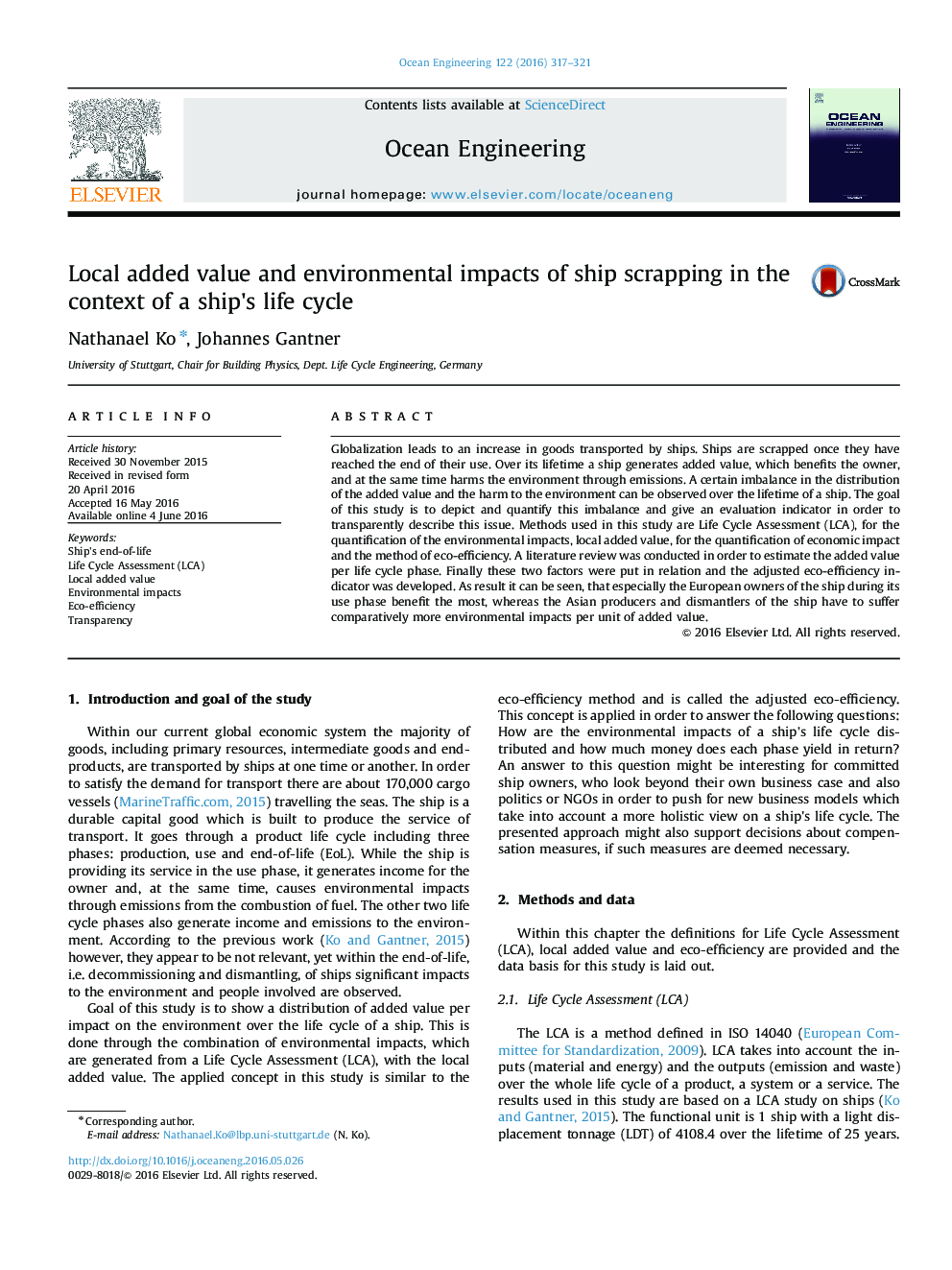| Article ID | Journal | Published Year | Pages | File Type |
|---|---|---|---|---|
| 1725020 | Ocean Engineering | 2016 | 5 Pages |
•A combination of LCA and added value within the eco-efficiency is proposed.•Goal is to display a distribution of eco-efficiency over the ship life cycle.•Use phase dominates the life cycle and could share for a fairer distribution.
Globalization leads to an increase in goods transported by ships. Ships are scrapped once they have reached the end of their use. Over its lifetime a ship generates added value, which benefits the owner, and at the same time harms the environment through emissions. A certain imbalance in the distribution of the added value and the harm to the environment can be observed over the lifetime of a ship. The goal of this study is to depict and quantify this imbalance and give an evaluation indicator in order to transparently describe this issue. Methods used in this study are Life Cycle Assessment (LCA), for the quantification of the environmental impacts, local added value, for the quantification of economic impact and the method of eco-efficiency. A literature review was conducted in order to estimate the added value per life cycle phase. Finally these two factors were put in relation and the adjusted eco-efficiency indicator was developed. As result it can be seen, that especially the European owners of the ship during its use phase benefit the most, whereas the Asian producers and dismantlers of the ship have to suffer comparatively more environmental impacts per unit of added value.
